This article is provided for informational purposes only and is not a substitute for professional medical advice, diagnosis or treatment. Contact a qualified health care professional before engaging in exercise, physical activity, or changing your diet, medications, or lifestyle.
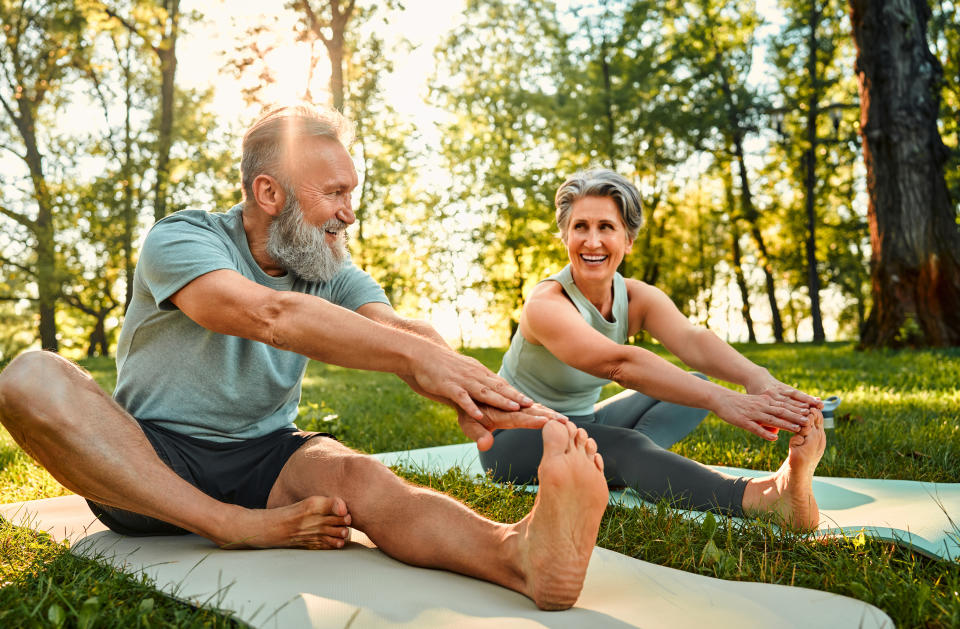

As we age, maintaining physical activity becomes increasingly important, not only for mobility, but also for overall health. Recent studies have shown why older people often move more slowly and how regular exercise can slow the natural decline in muscle efficiency.
A study from the University of Colorado Boulder found that older adults use more energy to move, which makes them move more slowly. Dr. Alaa A. Ahmed, lead author of the study, told Medical news today“As we age, our muscle cells may become less efficient at transforming energy into muscle strength and ultimately movement…We recruit more muscles, which costs more energy, to perform the same tasks.”
Slowing movement as we age can have a significant impact on our quality of life. This can restrict not only physical but also social activities.Dr. Alaa A. Ahmed, via Medical News Today
Another May 2024 study from Stanford Medicine found that exercise significantly benefits brain health by improving cognition, mood, and reducing the risk of neurodegenerative diseases. Researchers have found positive effects of exercise on overall health, including the immune system, energy production and metabolism.
How can aging Canadians incorporate exercise into their daily routine – and when should they start? Here’s what you need to know.
What Seniors Need to Know About Exercise
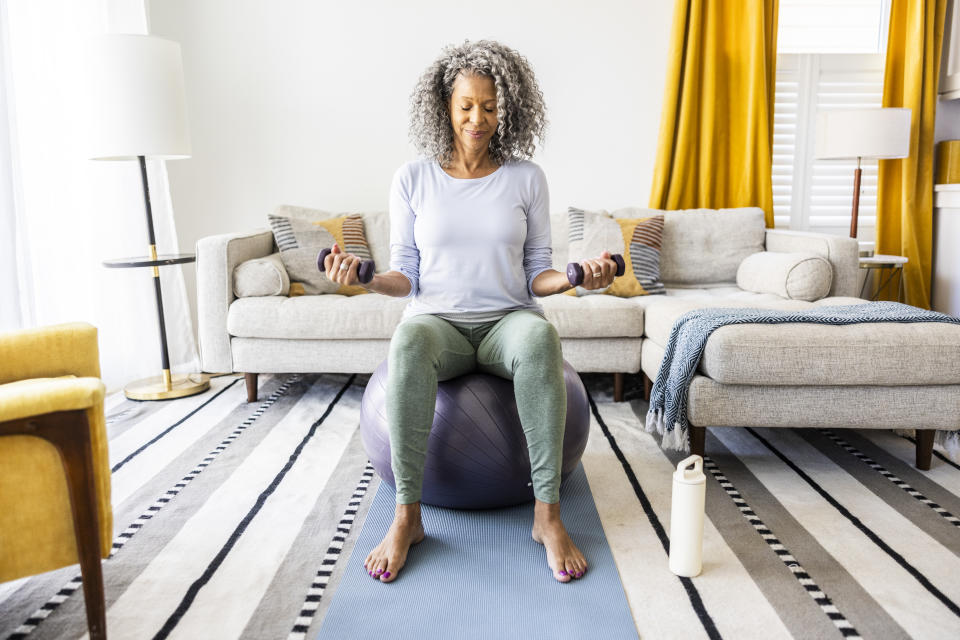

Steve Di Ciacca, physiotherapist and program manager at the Canadian Center for Activity and Aging, said Yahoo Canada that regular exercise is essential to mitigate the natural decline in muscle efficiency and movement.
“Our bodies are not meant to last forever. We reach our peak in our 30s and 40s, then with the natural process we start to lose muscle mass, we start to lose efficiency, we start to lose of brain matter. But it’s not necessarily the same for everyone,” Di Ciacca said. “A lot of it depends on how we actually live our lives in the future.” Leading a sedentary lifestyle can accelerate this decline, making people more fragile and more dependent on others.
Exercising regularly can slow or even reverse some aspects of physical and mental decline. “It’s never too late to start,” Di Ciacca said. “If we decide ‘it’s 60, we want to do something,’ we can actually reverse a significant portion of that decline.”
How does exercise help?
Strength training
Doing activities that work major muscle groups can help counteract muscle loss (sarcopenia) because they stimulate the processes that repair and grow your muscles.
Cardiovascular exercise
Activities like walking, swimming, or cycling can improve your heart’s ability to deliver oxygen and nutrients to the muscles. This leads to better stamina and energy levels.
Flexibility
Regular flexibility exercises maintain joint health and movement efficiency. They also reduce stiffness and can improve your range of motion.
Balance
Exercises that challenge balance can help improve your coordination and reduce the risk of falling.
Overall health
Regular physical activity promotes better sleep, better gut and mental health, and reduces the risk of chronic diseases like diabetes and coronary heart disease.
Recommended exercises and practices for seniors
Di Ciacca recommends following the Canadian Society for Exercise Physiology (CSEP) 24-hour movement guidelines, which suggest:
-
150 minutes of moderate to vigorous cardiovascular activity per week (brisk walking, swimming, cycling; for at least 20 to 30 minutes throughout the week)
-
Strength training two to three times per week (lifting weights or exercising with resistance bands)
-
Daily balance challenges (standing on one leg or balance-focused activities)
-
Seven to eight hours of sleep each night
-
Less sedentary time (interrupting long periods of sitting with movement)
Five Home Workouts for Seniors
According to Di Ciacca, here are five examples of simple exercises that seniors can try at home to improve their muscular efficiency, flexibility and balance:
1. Chair squats
Simply get up from a chair and sit down with control. This exercise helps build lower body strength and is functional for everyday activities like getting out of bed or a chair.
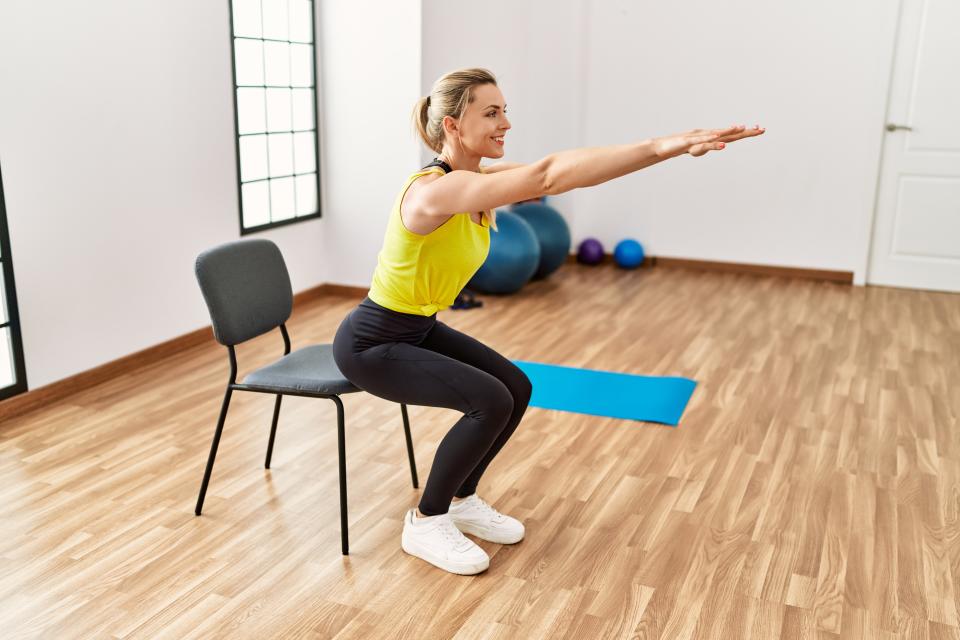

2. Weighted walking
Holding light weights or water bottles, march in place. This improves balance and lower body strength.
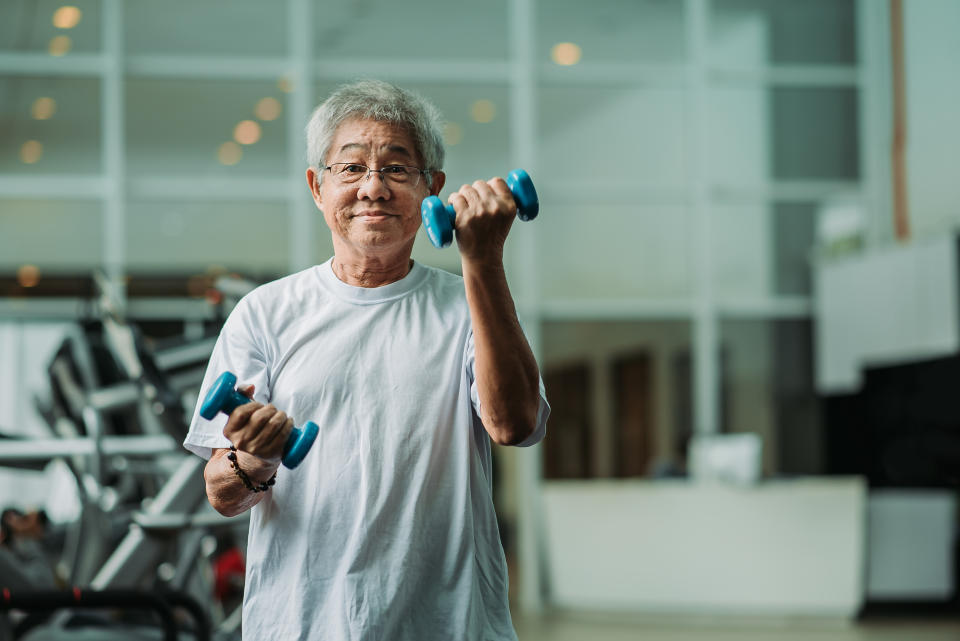

Push/Pull with Resistance Bands
Attach a resistance band to each hand or a solid object and perform pushing and pulling movements. This builds upper body strength.
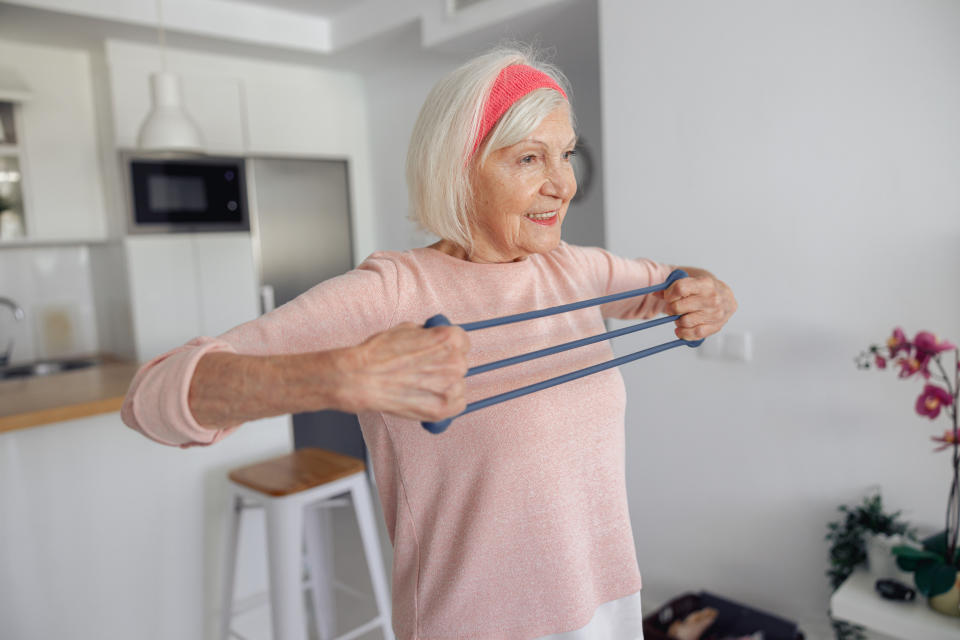

Balance on one leg
Stand on one leg for a few seconds, then switch. This exercise improves balance and stability.
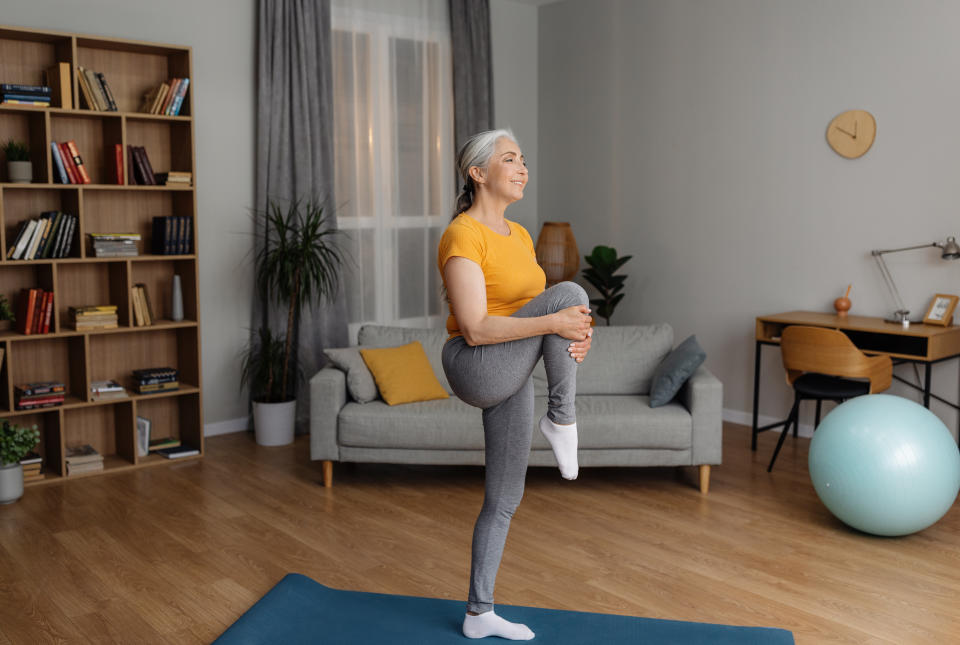

Large and small flexibility movements
Reach as high as possible to extend your entire body, to be as tall as possible and pause for a few seconds. Next, sit in a chair and bring your knees toward your chest, wrap your arms around your knees, and bring your chin toward your chest, creating a “little” ball. This improves flexibility and range of motion.


It is also important for seniors to gradually increase the intensity of their workouts to continue to see the benefits. “When you do exercises, they have to be a little bit demanding and it has to be a stress on the body. Otherwise, the body won’t bother to adapt and get stronger,” Di Ciacca said.
He advised using the Rate of Perceived Exertion (RPE) scale to assess training intensity. If 0 is sitting on a couch and 10 is being chased by a bear, you should aim for a score of five to seven on the scale, Di Ciacca said. You should exercise energy, increase your heart rate, while still being able to speak in short sentences.
How to start an exercise routine
For those new to exercise, Ciacca offers these tips:
-
Consult a doctor: If you have any health concerns, consult your doctor before starting a new exercise routine.
-
Start slowly: Gradually increase your activity level over a few weeks.
-
Focus on technology: Use proper form to avoid injury.
-
Consistency is key: Make exercise a regular part of your daily routine.
-
Progress gradually: Increase the intensity and duration of workouts as you become more comfortable.
-
Have fun: Choose activities you enjoy to stay motivated.
And remember: it’s never too late to start.
Tell us what you think by send us an emailcommenting below and tweeting @YahooStyleCA! follow us on Twitter And Instagram.